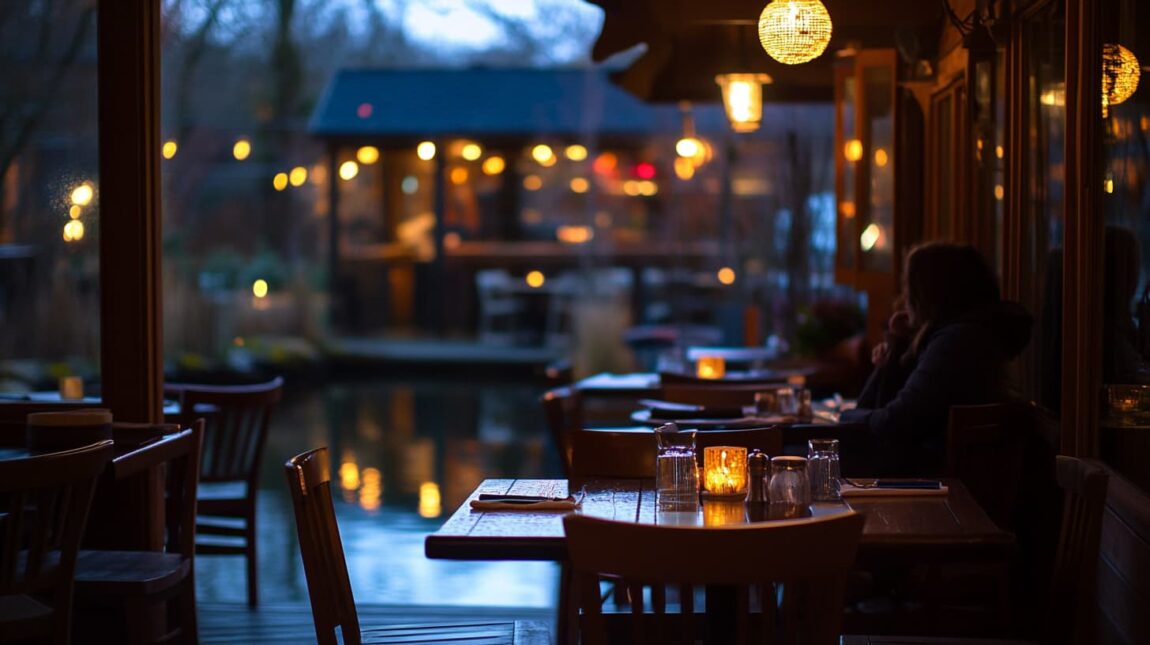The fusion of exceptional dining and architectural innovation has given rise to a new category of culinary destinations where the setting becomes as memorable as the cuisine itself. Across the American landscape, visionary restaurateurs and architects have transformed everything from historic landmarks to natural wonders into dining spaces that challenge conventional expectations. These establishments don’t merely serve meals; they craft immersive experiences that engage all senses, turning dinner into theater and architecture into a crucial ingredient of the culinary narrative.
Historic Buildings Finding New Life
In the heart of Lower Manhattan, Fraunces Tavern stands as a testament to architectural preservation and culinary evolution. Dating back to 1762, this Georgian-style building witnessed the birth of American independence and continues to serve patrons in an atmosphere steeped in colonial heritage. The restoration team faced the delicate challenge of incorporating modern kitchen facilities and dining amenities while preserving original structural elements, including the building’s distinctive brick façade and hand-hewn wooden beams.
Further south in Savannah, The Grey represents a brilliant reimagining of a 1938 Greyhound bus terminal. The transformation of this Art Deco landmark into a celebrated restaurant required careful consideration of both architectural heritage and social history. The design team preserved the terminal’s iconic streamlined exterior while creating an interior that acknowledges the building’s complex past during the segregation era. Original features, including the horseshoe-shaped lunch counter and terrazzo floors, were meticulously restored, creating a space that honors history while serving contemporary cuisine.
When Aviation Meets Dining
The Airplane Restaurant in Colorado Springs offers a dining experience that pushes the boundaries of adaptive reuse. Housed within a fully intact Boeing KC-97 tanker from 1953, the restaurant preserves aviation history while creating an unforgettable dining atmosphere. The careful conversion maintained the aircraft’s original components, from the cockpit to the cargo hold, while ingeniously incorporating modern dining amenities. The engineering feat required special consideration for weight distribution, climate control, and accessibility, resulting in a space that seats 42 diners within the airplane’s fuselage.
Nature’s Dining Rooms
Perhaps nowhere is the marriage of nature and dining more evident than at The Laurel Tree in Texas, where guests can ascend into a 450-year-old oak tree to enjoy their meal in an engineered treehouse dining room. The structure, designed to grow with the tree without impeding its natural development, represents a remarkable achievement in sustainable architecture. The dining room, suspended 40 feet above ground, features wrap-around windows that frame the ancient oak’s canopy, creating an intimate connection between diners and nature.
Dining at the Edge of the Pacific
Hawaii’s CanoeHouse demonstrates how traditional architecture can enhance the dining experience while respecting natural surroundings. The restaurant’s open-air design incorporates indigenous building techniques and materials, with thatched-roof pavilions and lava rock walls that seem to emerge organically from the landscape. The structure’s orientation maximizes natural ventilation while protecting diners from seasonal weather patterns, creating a seamless transition between interior and exterior spaces.
Dining at the Water’s Edge
At The Narrows Steakhouse overlooking Idaho’s Payette Lake, floor-to-ceiling windows seem to dissolve the boundary between interior and water. The cantilevered dining room appears to float above the lake, creating an illusion of dining on water. Similarly, New Orleans’ Chemin à la Mer employs innovative structural engineering to position diners directly above the Mississippi River. The restaurant’s glass-enclosed dining room utilizes special UV-filtering glass that maintains clear views while protecting both diners and food from intense southern sun.
Elevated Dining Experiences
Perched atop the Hollywood Hills, Yamashiro offers more than just panoramic views of Los Angeles. The restaurant, housed in a replica of a palace near Kyoto, demonstrates how careful architectural positioning can transform a meal into an event. The structure’s placement required innovative engineering solutions to ensure stability on the hillside while preserving the authentic feel of its Japanese inspiration. Terraced gardens and koi ponds surrounding the building create a gradual transition from the urban environment below to the tranquil dining space above.
Where Ecology Meets Epicurean Excellence
Earth at Hidden Pond exemplifies the future of restaurant architecture, where sustainability drives design decisions. The building employs a combination of reclaimed materials and cutting-edge green technology, including solar panels discretely integrated into the roof design and a sophisticated rainwater harvesting system that supplies the restaurant’s organic gardens. The structure’s orientation maximizes natural light while minimizing energy consumption, with large windows that adjust their tint automatically based on sunlight intensity.
How Architecture Shapes the Dining Experience
The impact of architectural design on dining extends beyond aesthetics. Studies have shown that ceiling height affects flavor perception, while natural light influences dining duration and satisfaction. Restaurant architects now work closely with acoustic engineers to create spaces that maintain comfortable conversation levels even at full capacity. The strategic placement of tables, the flow of service paths, and the integration of natural elements all contribute to an environment that enhances both the food and the overall dining experience.
The Evolution of Restaurant Design
As technology advances and dining preferences evolve, restaurant architecture continues to adapt. Virtual reality is being incorporated into design processes, allowing architects to perfect spatial flow and ambiance before construction begins. The recent global health crisis has accelerated innovations in flexible space design, with buildings that can quickly adapt to changing needs while maintaining their architectural integrity.
The future promises even more integration between digital technology and physical space, with smart materials that respond to environmental conditions and interactive elements that enhance the dining experience without detracting from the architecture’s primary role as a container for culinary excellence.

The role of architecture in restaurant design has evolved far beyond creating simple spaces to serve food. Today’s most innovative restaurants demonstrate that when thoughtful architecture meets culinary expertise, the result can transform an ordinary meal into an extraordinary experience. As we look to the future, the continued evolution of restaurant architecture promises to push the boundaries of what’s possible in dining design, creating spaces that are not just places to eat, but destinations that feed both body and soul.